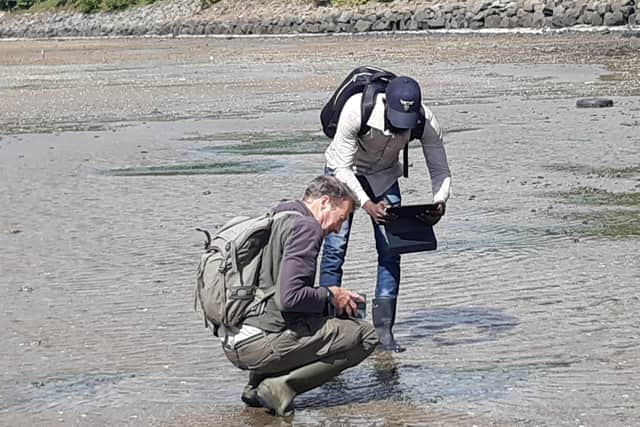Restoration Forth: 130,000 seeds added to Forth in important seagrass project
and live on Freeview channel 276
Last spring as part of a trial, volunteers planted 25,000 eelgrass seeds at Kinghorn as well as East Lothian’s Belhaven Bay, and Dalmeny’s Drum Sands: alongside dwarf eelgrass transplants.
This month, a further 135,000 common eelgrass seeds have now been added thanks to the work of volunteers trained by a team of experts in seagrass planting techniques, so that local residents can support seagrass beds to thrive in the future.
Advertisement
Hide AdAdvertisement
Hide AdKinghorn’s beachscape is of particular importance in the £2.4m project because it is the major site in the Forth for the larger seagrass, known Zostera marina - and also the oldest known bed in the estuary.


Restoration Forth, a partnership with communities and organisations, aims to restore four hectares of seagrass meadows and European flat oyster beds in the Firth of Forth. It is a three-year programme funded by Aviva, the ScottishPower Foundation, the Moondance Foundation and the Scottish Government’s Nature Restoration Fund, which is facilitated by the Scottish Marine Environmental Enhancement Fund (SMEEF) and managed by NatureScot.
The seeds recently planted were collected in Orkney last year, with the support of the island residents. Since then, volunteers have helped in their processing over winter.
Esther Thomsen from Project Seagrass said: “Seagrass meadows can contribute to increase biodiversity, help tackle climate change, and improve water quality. The passion and collective enthusiasm of communities to dive in and help makes this project so special. There’s nothing like experiencing a seagrass meadow first hand to foster the understanding of this important habitat and to champion their future protection. Together, we’re monitoring our successes and failures and learning a lot from our trials – ultimately informing seagrass restoration science.”
Advertisement
Hide AdAdvertisement
Hide AdVolunteer Barbara said: “I’m passionate about the project because it brings together local communities around the Firth of Forth enabling us to do something tangible to help restore biodiversity and reduce global warming. I have learned so much about the marine environment and met lots of like-minded people.”
Another volunteer, Nigel, added: “Planting the seeds and then returning to see that they have grown is amazingly satisfying. I really want to help keep our community involved so that the restoration work and awareness of our marine environment continues long into the future.”